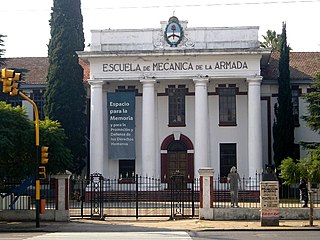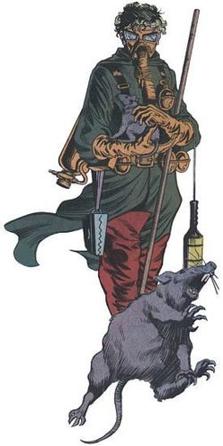Related Research Articles

Rats are various medium-sized, long-tailed rodents. Species of rats are found throughout the order Rodentia, but stereotypical rats are found in the genus Rattus. Other rat genera include Neotoma, Bandicota and Dipodomys.

American Psycho is a novel by American writer Bret Easton Ellis, published in 1991. The story is told in the first-person by Patrick Bateman, a wealthy, narcissistic, vain Manhattan investment banker who supposedly lives a double life as a serial killer. Alison Kelly of The Observer notes that while "some countries [deem it] so potentially disturbing that it can only be sold shrink-wrapped", "critics rave about it" and "academics revel in its transgressive and postmodern qualities".

Bret Easton Ellis is an American author and screenwriter. Ellis was one of the literary Brat Pack and is a self-proclaimed satirist whose trademark technique, as a writer, is the expression of extreme acts and opinions in an affectless style. His novels commonly share recurring characters.

Patrick Bateman is a fictional character created by novelist Bret Easton Ellis. He is the villain protagonist and unreliable narrator of Ellis's 1991 novel American Psycho and is played by Christian Bale in the 2000 film adaptation of the same name. Bateman is a wealthy and materialistic yuppie and Wall Street investment banker who, supposedly, leads a secret life as a serial killer. He has also briefly appeared in other Ellis novels and their film and theatrical adaptations.
Alfredo Ignacio Astiz is a convicted war criminal and former Argentine military commander, intelligence officer, and naval commando who served in the Argentine Navy during the military dictatorship of Jorge Rafael Videla during the Proceso de Reorganización Nacional (1976–1983). He was known as El Ángel Rubio de la Muerte, and had a reputation as a torturer. He was discharged from the military in 1998 after defending his actions in a press interview.
Hooding is the placing of a hood over the entire head of a prisoner. Hooding is widely considered to be a form of torture; one legal scholar considers the hooding of prisoners to be a violation of international law, specifically the Third and Fourth Geneva Conventions, which demand that persons under custody or physical control of enemy forces be treated humanely. Hooding can be dangerous to a prisoner's health and safety. It is considered to be an act of torture when its primary purpose is sensory deprivation during interrogation; it causes "disorientation, isolation, and dread." According to the International Committee of the Red Cross, hooding is used to prevent a person from seeing, to disorient them, to make them anxious, to preserve their torturer's anonymity, and to prevent the person from breathing freely.
This article describes the use of torture since the adoption of the 1948 Universal Declaration of Human Rights (UDHR), which prohibited it. Torture is prohibited by international law and is illegal in most countries. However, it is still used by many governments.

The Higher School of Mechanics of the Navy has gone through three major transformations throughout its history. Originally ESMA served as an educational facility of the Argentine Navy. The original ESMA was a complex located at 8151 Libertador Avenue, in the Autonomous City of Buenos Aires, in the barrio of Núñez. Additionally, It was the seat of U.T.3.3.2—Unidad de Tareas 2 of G.T.3.3 [es].

The Ratcatcher is a character appearing in American comic books and other media published by DC Comics, primarily as an enemy of Batman. He belongs to the collective of adversaries that make up the Dark Knight's rogues gallery. Once an actual rat-catcher in Gotham City, Flannegan sank into a life of crime. Calling himself the Ratcatcher because of his special ability to communicate with and train rats, Flannegan has used his minions to plague Gotham on more than one occasion by unleashing hordes of the vermin.
National Commission on the Disappearance of Persons was an Argentine organization created by President Raúl Alfonsín on 15 December 1983, shortly after his inauguration, to investigate the fate of the desaparecidos and other human rights violations performed during the military dictatorship known as the National Reorganization Process between 1976 and 1983.

Foot whipping, falanga/falaka or bastinado is a method of inflicting pain and humiliation by administering a beating on the soles of a person's bare feet. Unlike most types of flogging, it is meant more to be painful than to cause actual injury to the victim. Blows are generally delivered with a light rod, knotted cord, or lash.

American Psycho is a 2000 satirical psychological thriller film directed by Mary Harron, who co-wrote the screenplay with Guinevere Turner. Based on the 1991 novel by Bret Easton Ellis, it stars Christian Bale as Patrick Bateman, a New York City investment banker who leads a double life as a serial killer. Willem Dafoe, Jared Leto, Josh Lucas, Chloë Sevigny, Samantha Mathis, Cara Seymour, Justin Theroux, and Reese Witherspoon appear in supporting roles. The film blends horror and black comedy to satirize 1980s yuppie culture and consumerism, exemplified by Bateman and supporting cast.

In Brazil, the National Truth Commission investigated human rights violations of the period of 1946–1988 - in particular by the authoritarian military dictatorship that ruled Brazil from April 1, 1964 to March 15, 1985.

Sednaya Prison, nicknamed the "Human Slaughterhouse" is a military prison near Damascus in Syria operated by the Syrian government. The prison has been used to hold thousands of prisoners, both civilian detainees and anti-government rebels. The Syrian Observatory for Human Rights (SOHR) estimated in January 2021 that 30,000 detainees have perished in Sednaya from torture, ill-treatment and mass executions since the outbreak of the Syrian Civil War, while Amnesty International estimated in February 2017 "that between 5,000 and 13,000 people were extrajudicially executed at Saydnaya between September 2011 and December 2015."

Human rights abuses in Chile under Augusto Pinochet were the crimes against humanity, persecution of opponents, political repression, and state terrorism committed by the Chilean Armed Forces, members of Carabineros de Chile and civil repressive agents members of a secret police, during the military dictatorship of Chile under General Augusto Pinochet from 1973 to 1990.
The Republic of Uruguay is located in South America, between Argentina, Brazil and the South Atlantic Ocean, with a population of 3,332,972. Uruguay gained independence and sovereignty from Spain in 1828 and has full control over its internal and external affairs. From 1973 to 1985 Uruguay was governed by a civil-military dictatorship which committed numerous human rights abuses.
The dictatorship of Philippine President Ferdinand E. Marcos in the 1970s and 1980s is historically remembered for its record of human rights abuses, particularly targeting political opponents, student activists, journalists, religious workers, farmers, and others who fought against the Marcos dictatorship. Based on the documentation of Amnesty International, Task Force Detainees of the Philippines, and similar human rights monitoring entities, historians believe that the Marcos dictatorship was marked by 3,257 known extrajudicial killings, 35,000 documented tortures, 737 'disappeared', and 70,000 incarcerations.

Disappeared Detainees is the term commonly used in Latin American countries to refer to the victims of kidnappings, usually taken to clandestine detention and torture centers, and crimes of forced disappearance, committed by various authoritarian military dictatorships during the 1970s and 1980s, and officially recognized, among others, by the governments of Argentina (1984) and Chile (1991).
References
- ↑ Cameron, Mary (1931). Merrily I Go to Hell: Reminiscences of a Bishop's Daughter.
the Canton Rat torture, in which enormous half starved rats are put into a box with the victim, who is rapidly eaten alive
- ↑ George Lillie Craik; Charles MacFarlane (1848). The Pictorial History of England. Harper & Brothers.
- ↑ John Lothrop Motley (1883). The Rise of the Dutch Republic. Bickers & Son.
- ↑ Shengold, Leonard (1971). "More about Rats and Rat People". International Journal of Psycho-Analysis. 52 (3): 277–288. PMID 5106163.
- ↑ Watts, Jonathan; Rocha, Jan (10 December 2014). "Brazil president weeps as she unveils report on military dictatorship's abuses". The Guardian . Retrieved 3 September 2022.
- ↑ Grupo de denuncia de la violencia sexual sufrida durante el terrorismo de Estado (2014). Vivencias del horror. Tortura sexual en las cárceles de Uruguay. Irrendentos Libros (in Spanish)
- ↑ Simmons, Elizabeth (2009). Torture Under Pinochet's Regime. p. 12.
- 1 2 Nunca Más (Never Again); Report of CONADEP. 1984.
- ↑ Chile: Evidence of torture: an Amnesty International Report. London (Amnesty International Publications) 1983, pp. 35–37
- ↑ Shaer, Matthew (September 2, 2014) "Epstein Orthodox Hit Squad", GQ
- ↑ "NJ Couple Sentenced For Helping Jewish Divorce Ring". The Times of Israel. 13 January 2016. Retrieved 3 September 2022.
- ↑ Hayes, Kevin J. (2002). The Cambridge Companion to Edgar Allan Poe. Cambridge University Press. ISBN 0-521-79727-6.
- ↑ Ahumada, Jorge (Summer 2005). "Review of Mental Zoo: Animals in the Human Mind and its Pathology". Publications: Book Reviews. American Psychological Association Division of Psychoanalysis. Retrieved 2008-01-27.
- ↑ Christopher Boorse, Roy A. Sorensen (March 1988). "Ducking Harm". The Journal of Philosophy. 85 (3): 115–134. doi:10.2307/2027067. JSTOR 2027067.
- ↑ Reading the Body in Bret Easton Ellis's American Psycho (1991) - HAL-SHS
- ↑ Rosenblatt, Roger (December 16, 1990). "Snuff This Book! Will Bret Easton Ellis Get Away With Murder?". The New York Times . Retrieved 2019-09-15.
- ↑ Bedard, Mike (3 March 2022). "The Riddler Scene in the Batman That Went Too Far". Looper. Retrieved 3 September 2022.